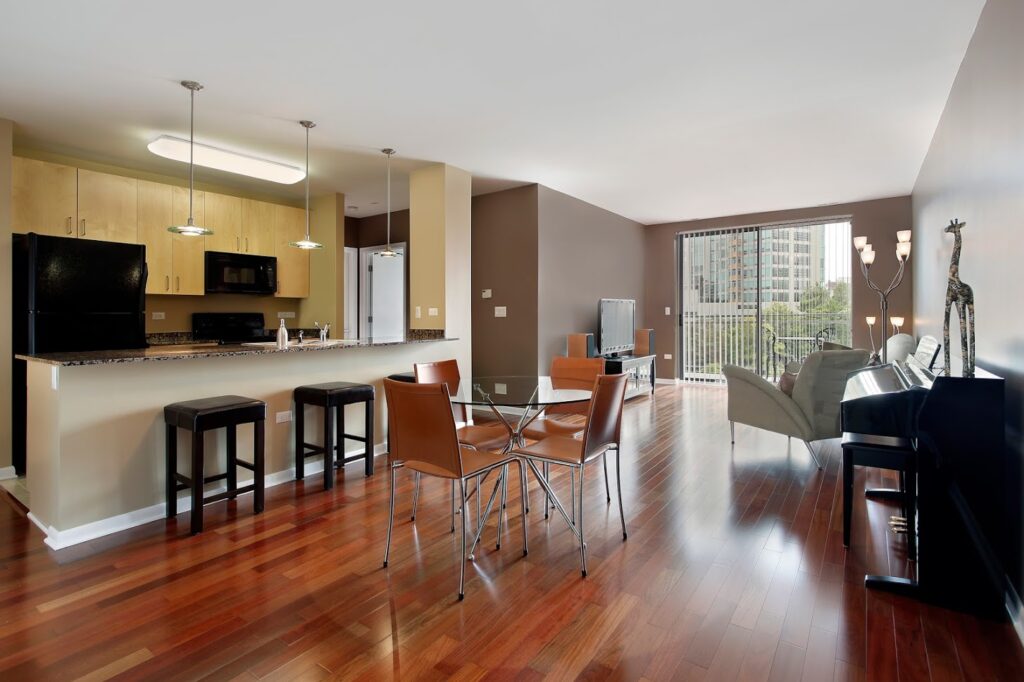
5 Painting Tips for Your Home’s Open Floor Plan
Open space floor plans are popular for many reasons. They add natural lighting, help a house feel open and airy, and boost conversation and shared activities. But they bring their own challenges with painting. With fewer walls and larger swaths of uninterrupted spaces that need paint, an open layout can be overwhelming for many homeowners.
To help you find the best paint scheme for your Pittsburgh open floor plan painting project, discover five tips anyone can apply.
1. Choose a Limited Palette
Start by choosing a color palette for the entire space before you begin your Pittsburgh open floor plan painting project. Many homeowners opt for three to five colors that complement each other. The color wheel is an excellent place to choose your palette. By learning a little about color theory, you’ll see the relationships between things like complementary colors, analogous colors, and monochromatic colors.
A good rule of thumb for palette choice is known as the 60-30-10 rule. With this method, 60% of the palette would be one dominant color (often a neutral shade), 30% a secondary color, and 10% a contrasting tertiary color for things like trim and molding. Extend this to more colors for a larger space by adding in one or two extra shades to provide more variety.
2. Make Changes at Architectural Points
Consider the natural boundaries and architectural features of the space in your Pittsburgh open floor plan painting. For instance, this might be a corner where walls meet, a built-in cabinet or hutch, stairs, or a sliding glass door. These architectural points are natural breaks to change colors on the walls, resulting in a transition that will add variety in shades but still look organic instead of jarring. This is also a good guideline for the ceilings of a two-story open layout.
3. Choose Accent Walls Carefully
Accent walls — featuring a bold color or pattern — are important in an open floor plan because one single color can make the room appear overly large or uninviting. But adding accent walls can be difficult because many open layout walls are too large for this purpose. A bold or dark color on a very large wall may be too much for the room or make it feel dark.
A good accent wall is a relatively small section of the open space with natural borders and a logical flow. If the introduction of a full accent wall feels unnatural, consider using other means to liven up the color palette — such as colorful furnishings, artwork, or trim and molding.
4. Create Borders When None Exist
If you want to switch colors and you have no natural border to facilitate it, you can create your own transitions. For instance, use draperies or curtains from floor to ceiling to make a full-length break between two colors on a single wall. This trick could be used to extend a window from floor to ceiling in order to mask color transitions or to create a break even where you have no window.
5. Divide Zones With Accent Colors
One of the biggest challenges in Pittsburgh open floor plan painting is how to designate different spaces for different uses. Differentiate between zones, such as the dining room and living room, by using specific accent colors rather than changing the whole palette.
If you selected five colors for your palette, for example, you might use the first three throughout the entire space and save each of the other two specifically for each zone. This provides some visual distinction between rooms and allows more variety in what could be a boring monochromatic space.
If you feel overwhelmed by the myriad of options available for decorating your open layout space, start by meeting with a professional interior painter. Fagan Painting LLC has assisted homeowners throughout the Pittsburgh area who face unusual painting challenges. Call today to make an appointment or request a walk-through of your home with our team of pros and we can help with all of you Pittsburgh open floor plan painting needs.
